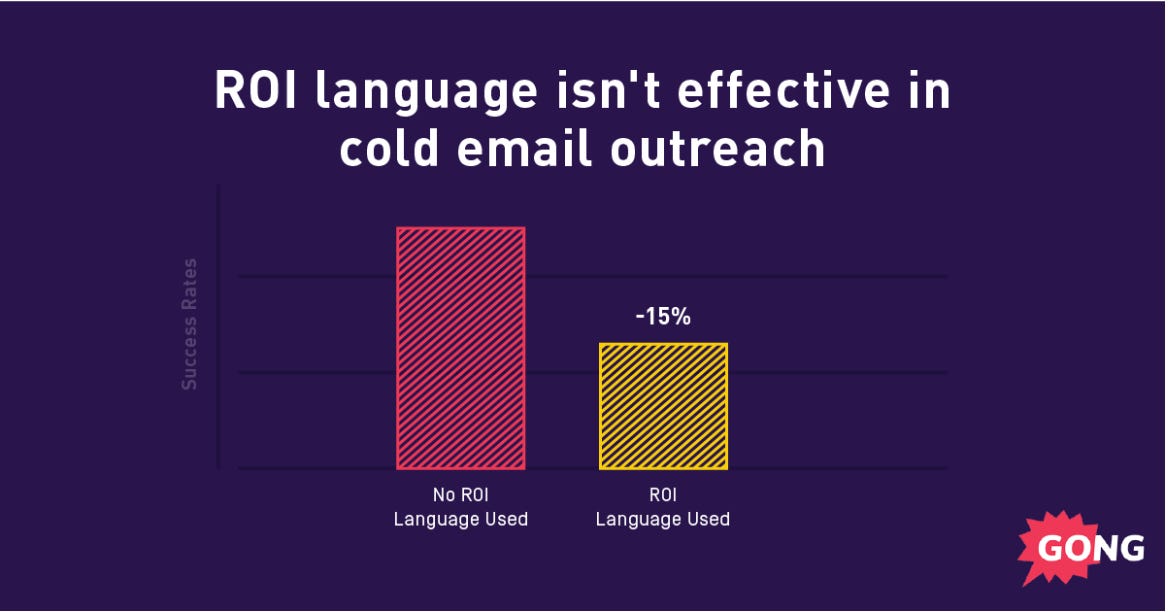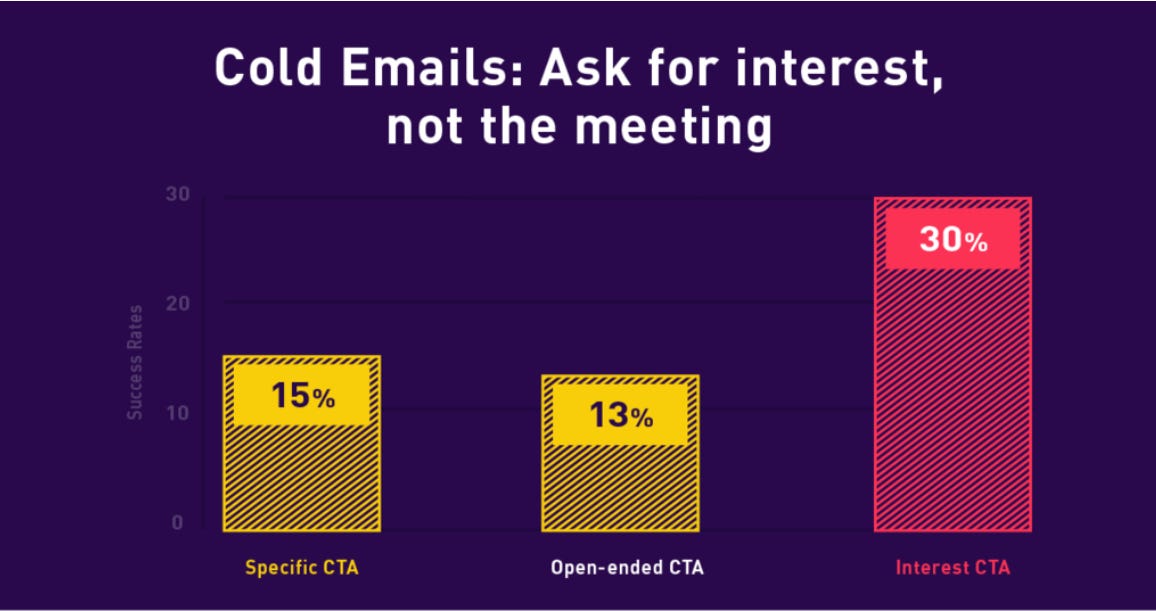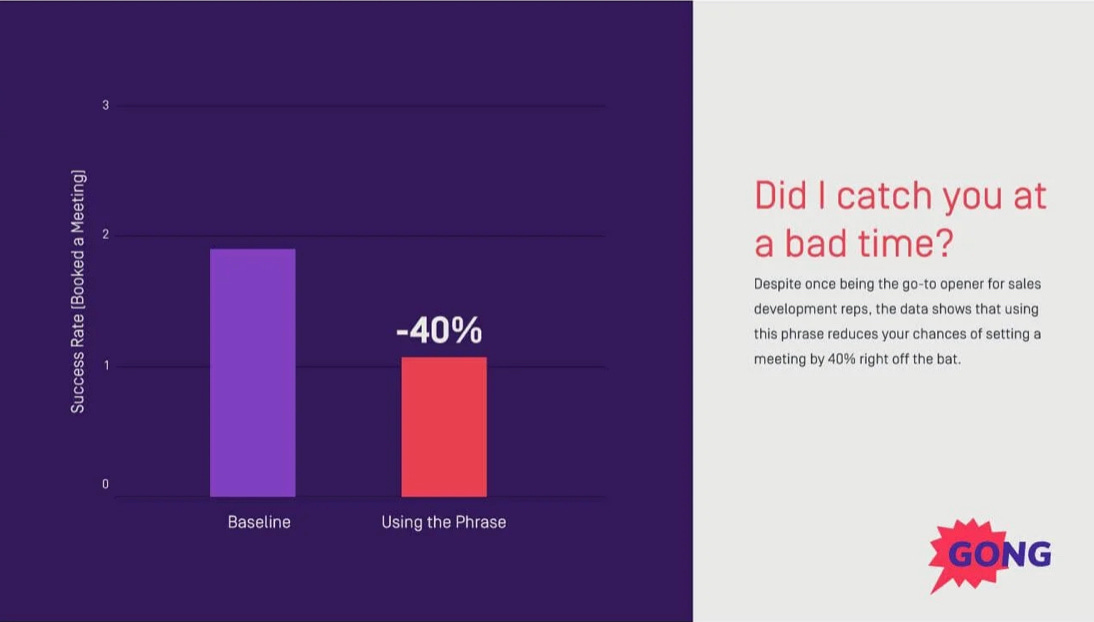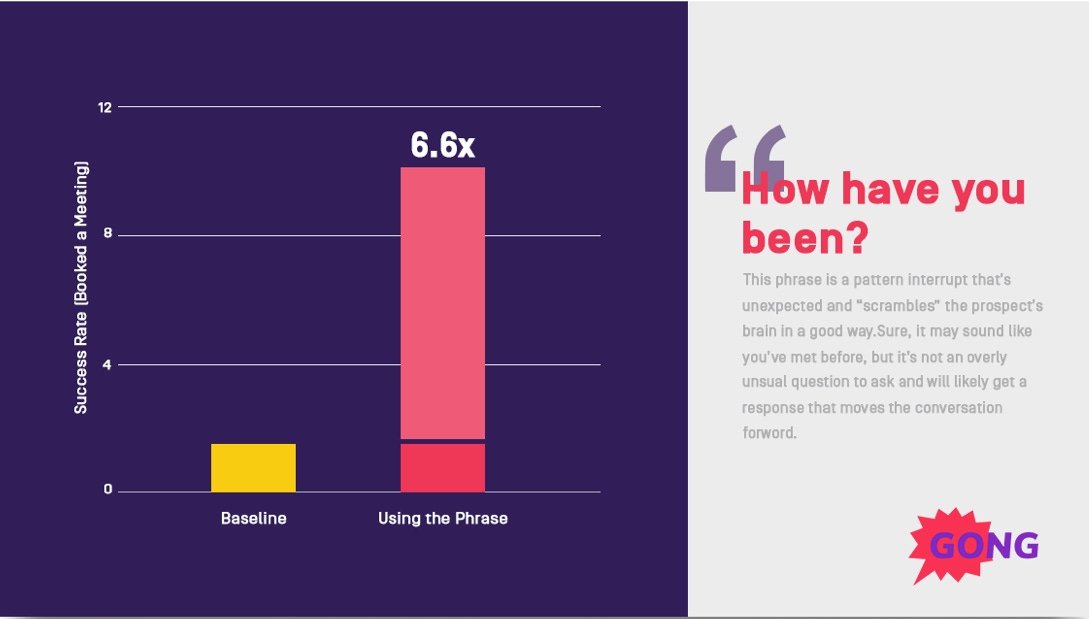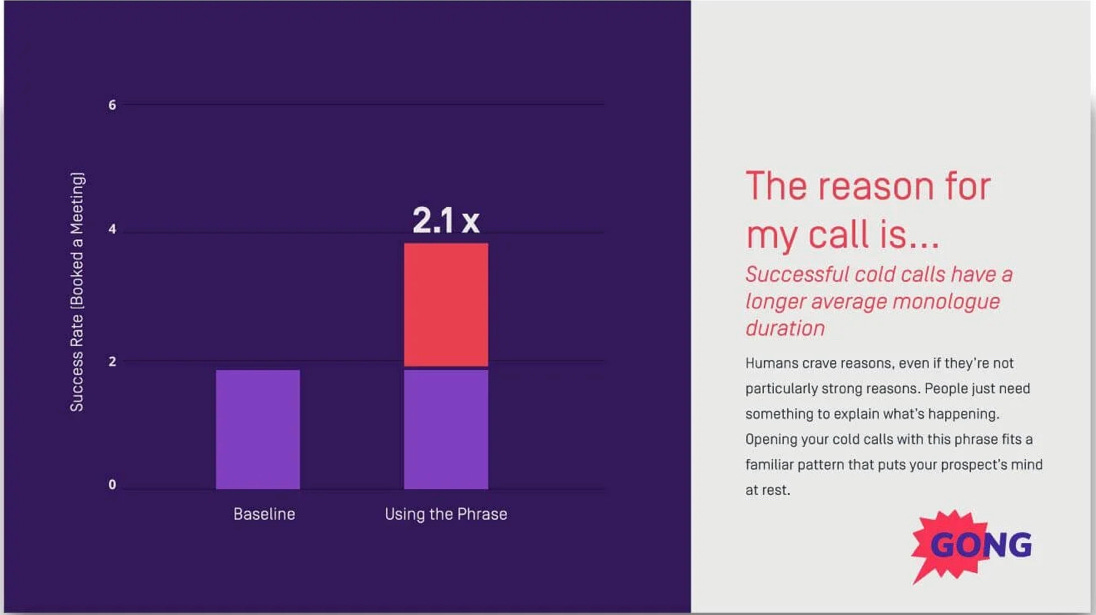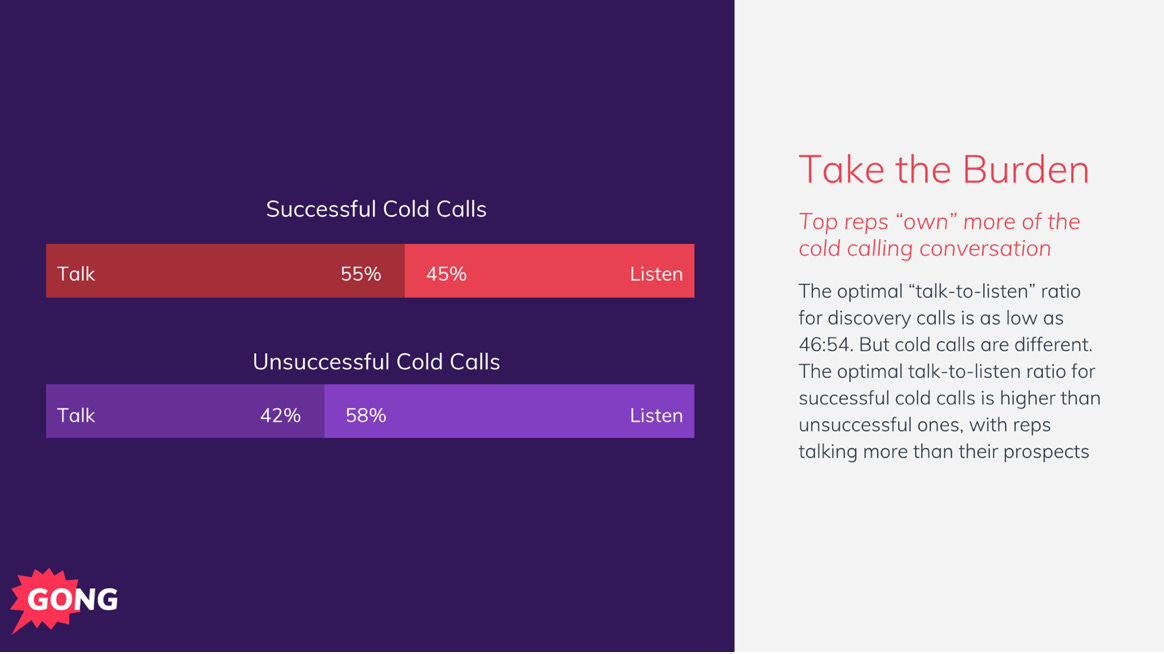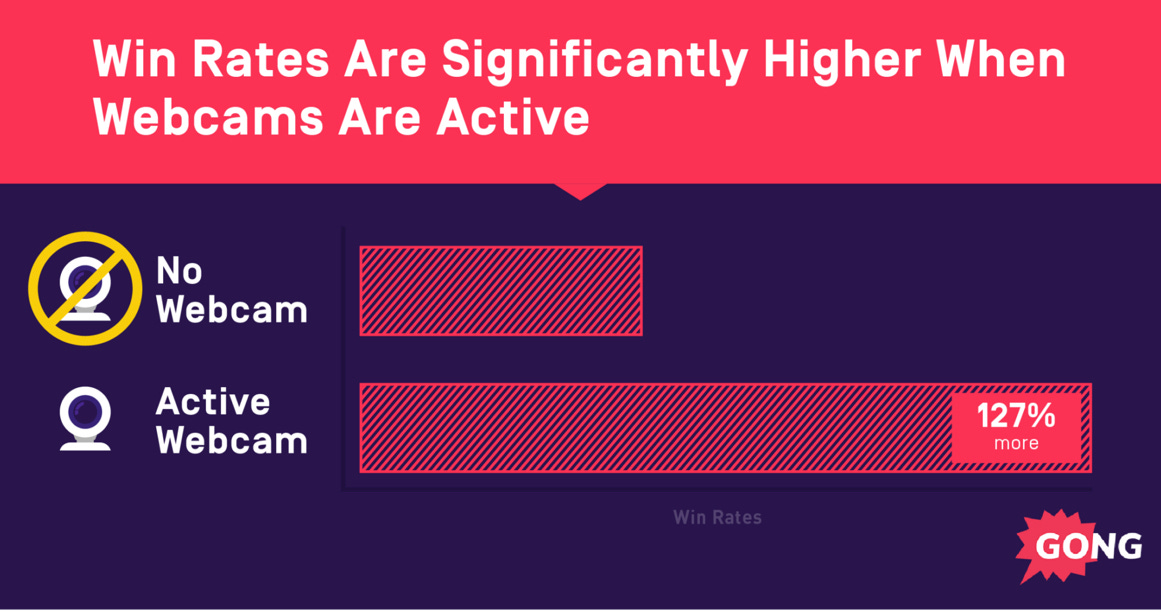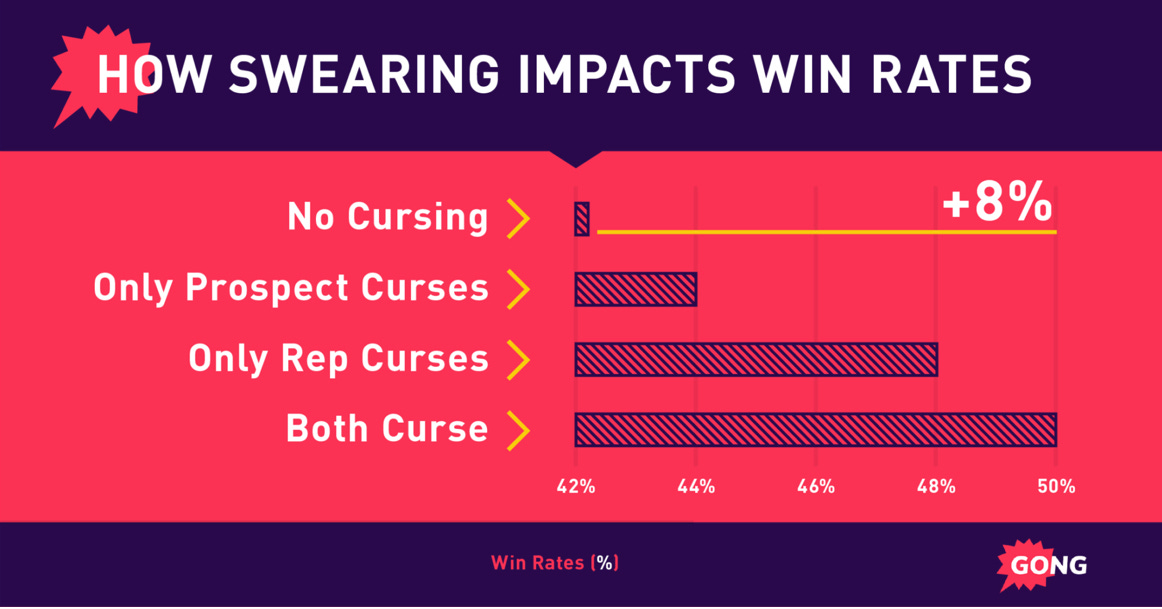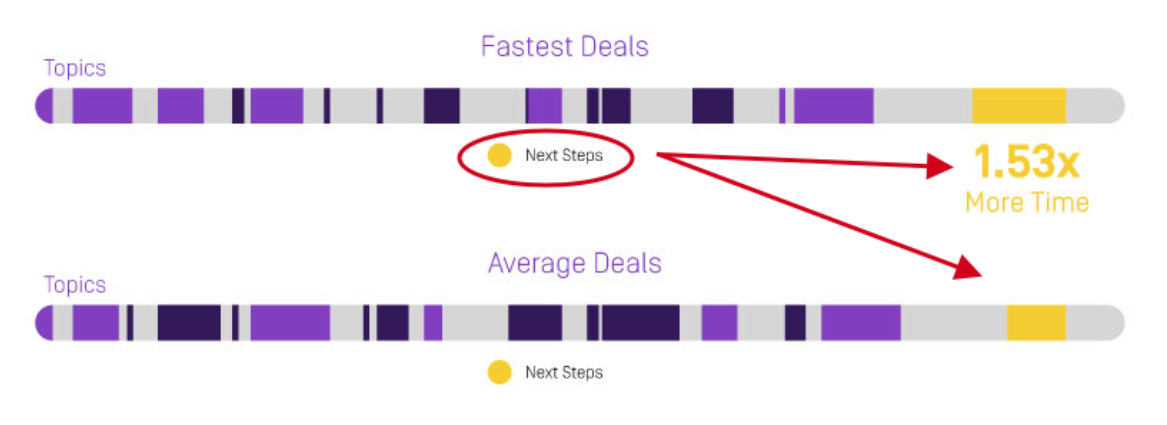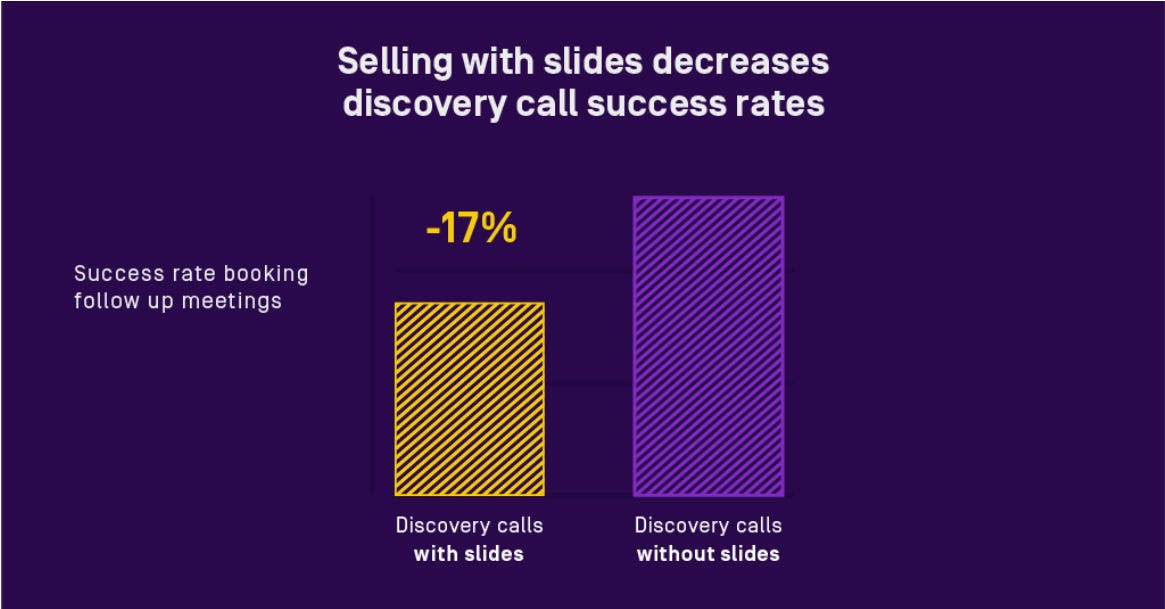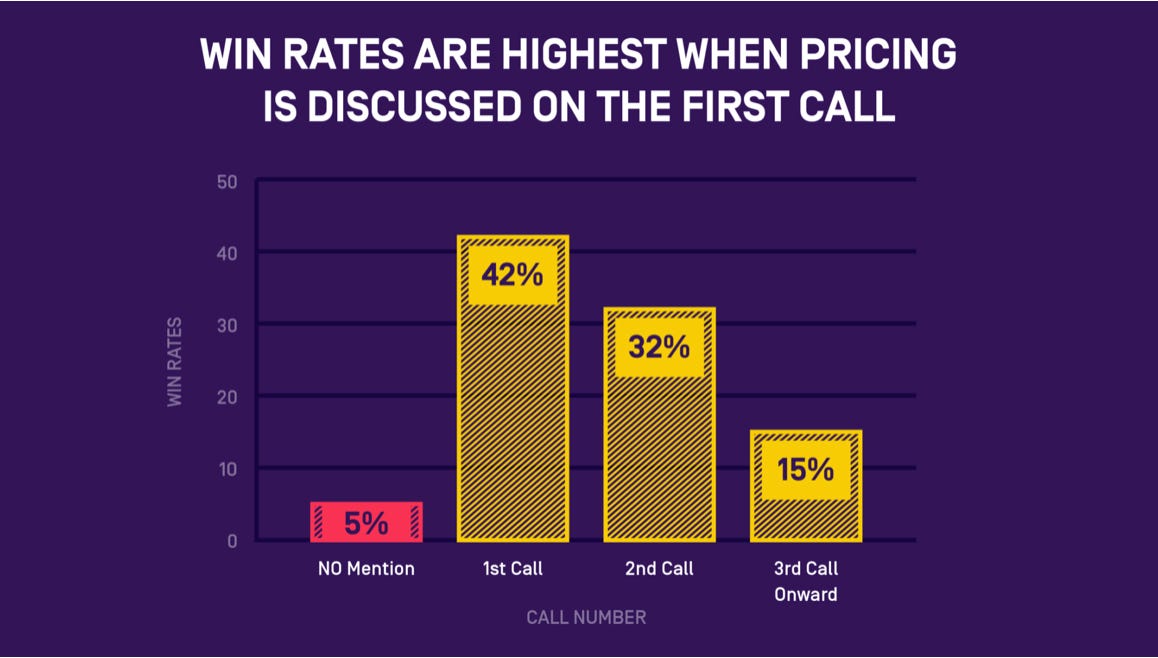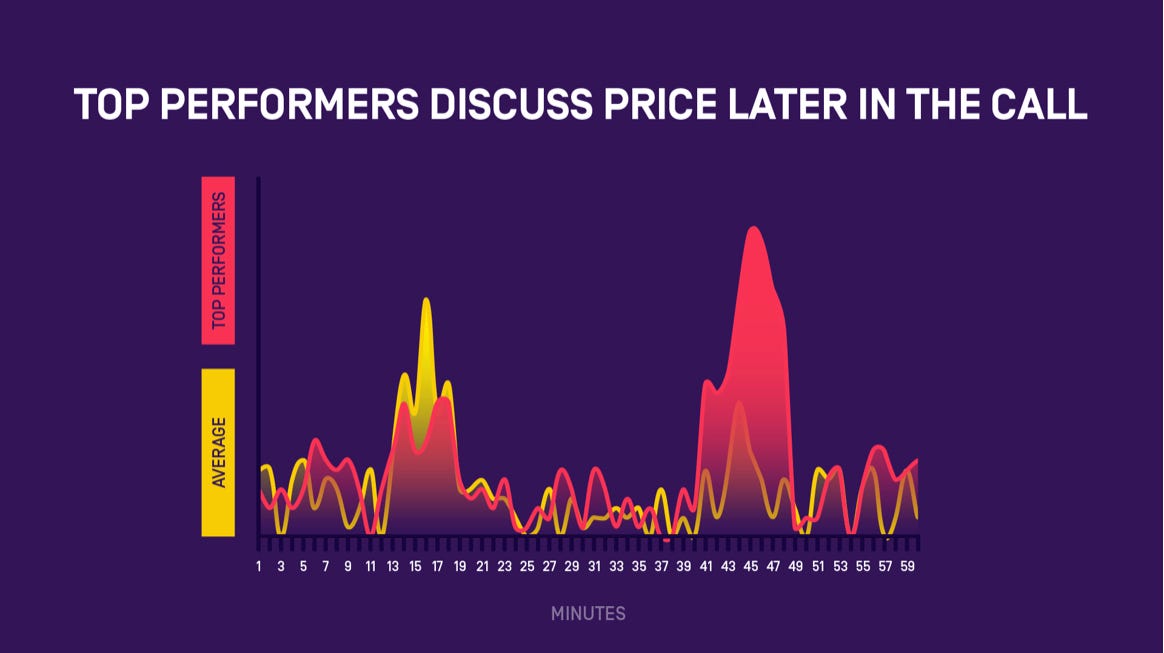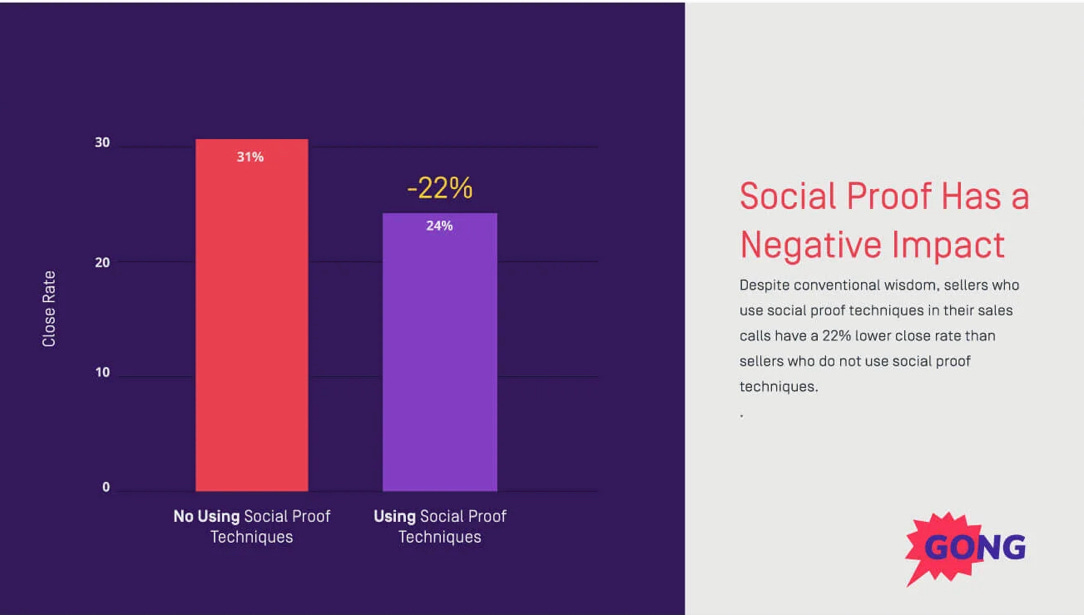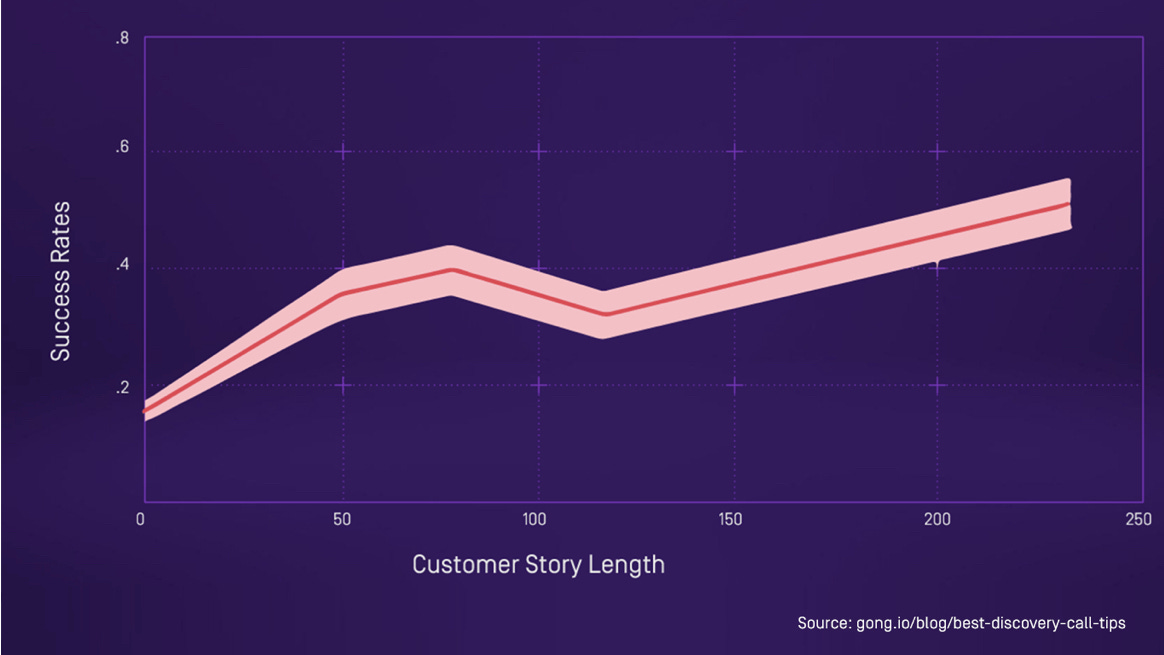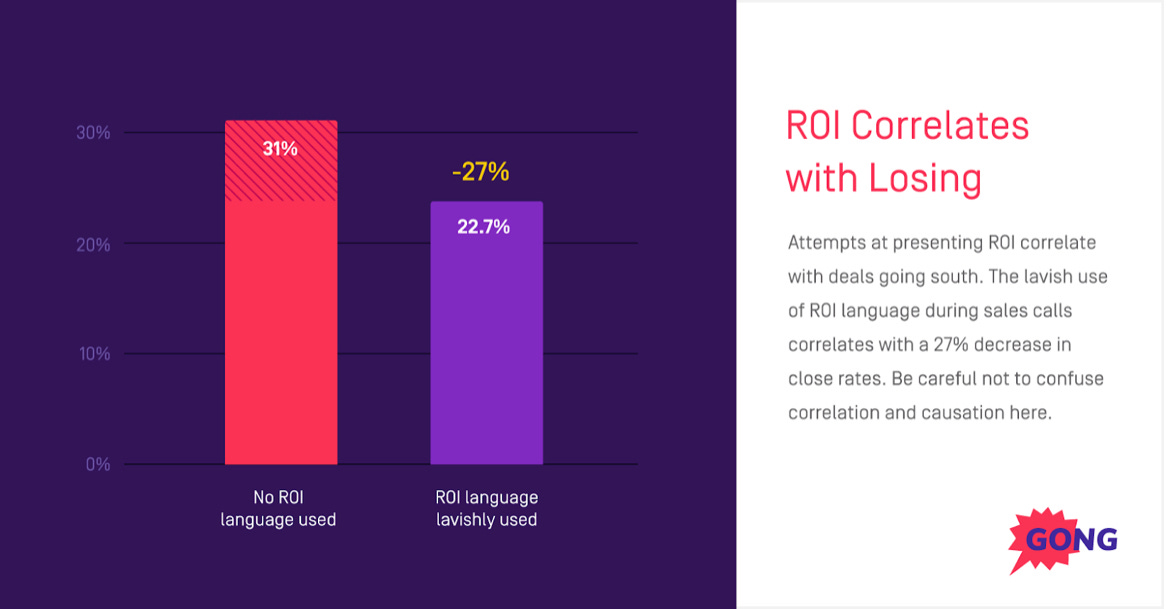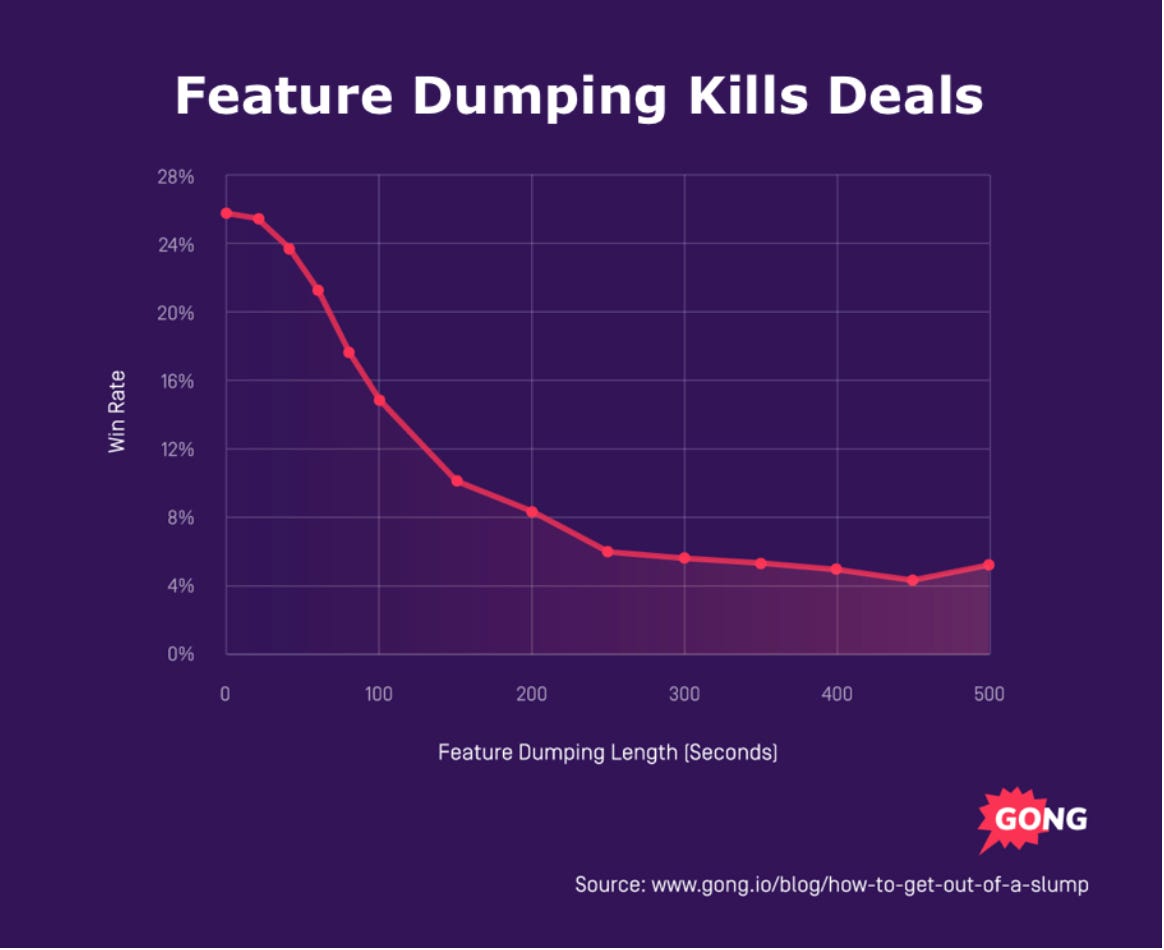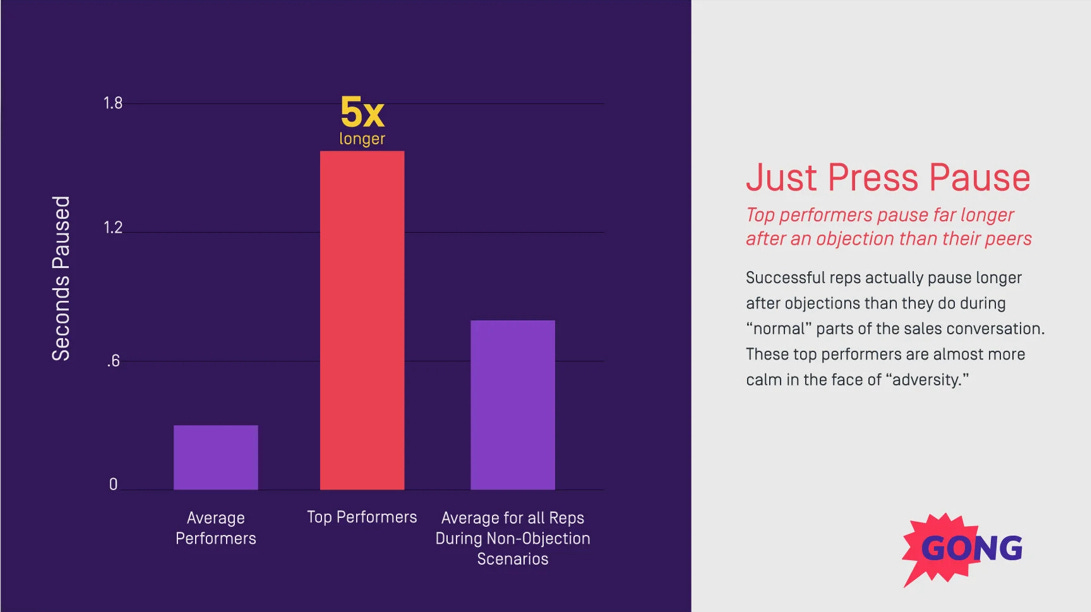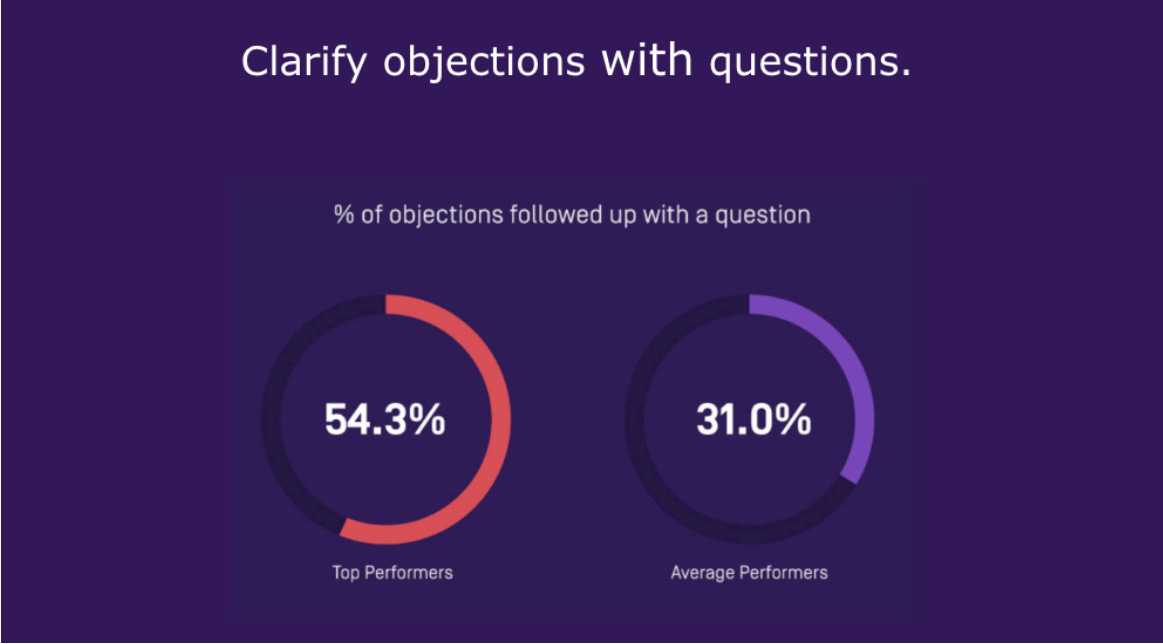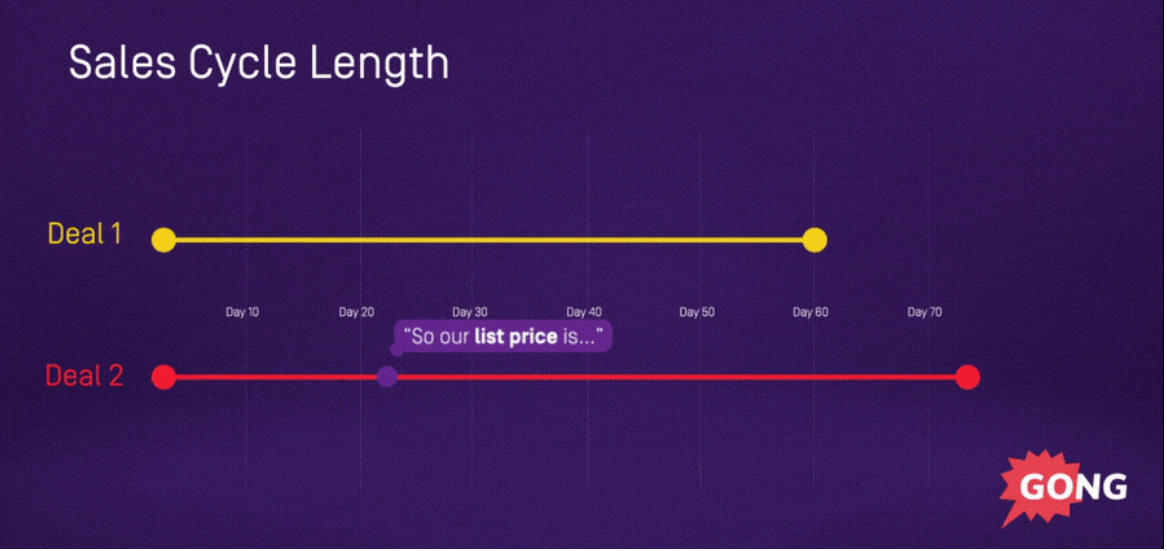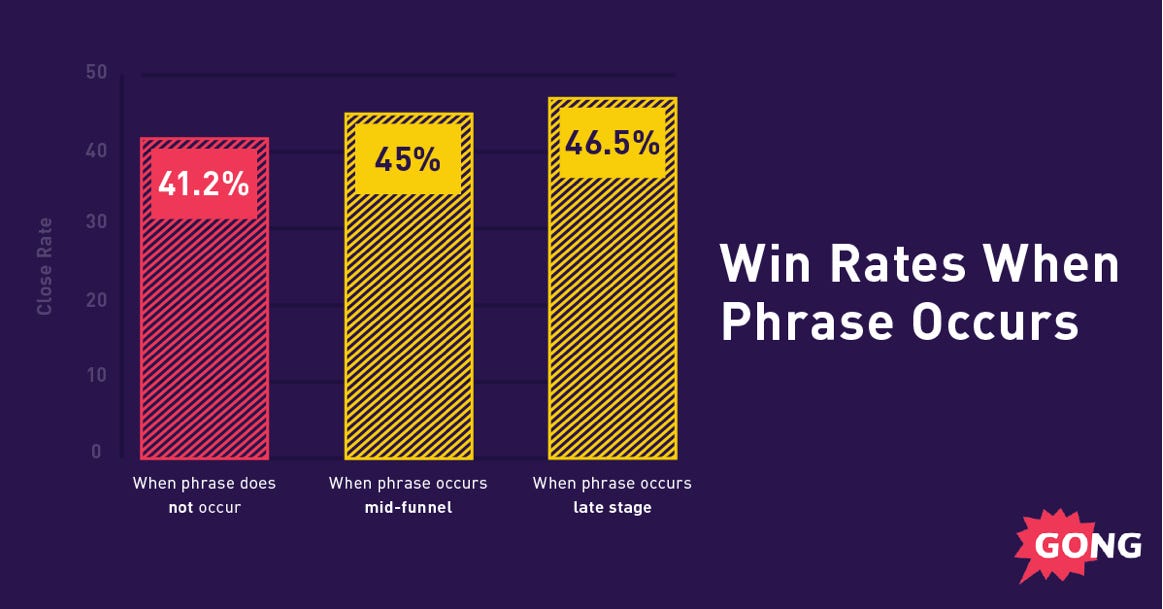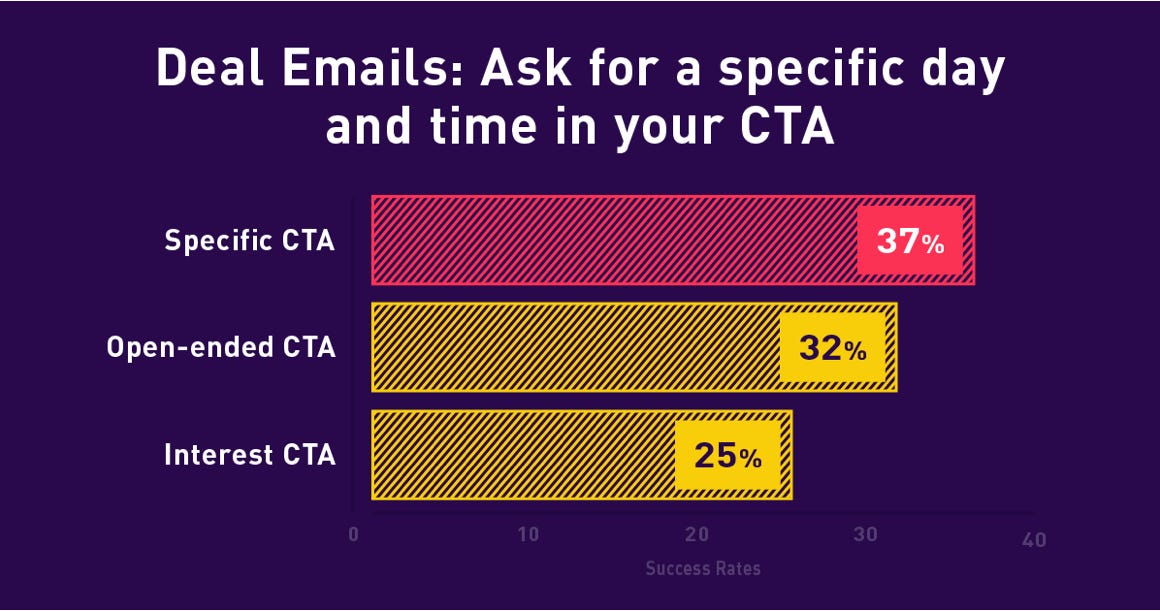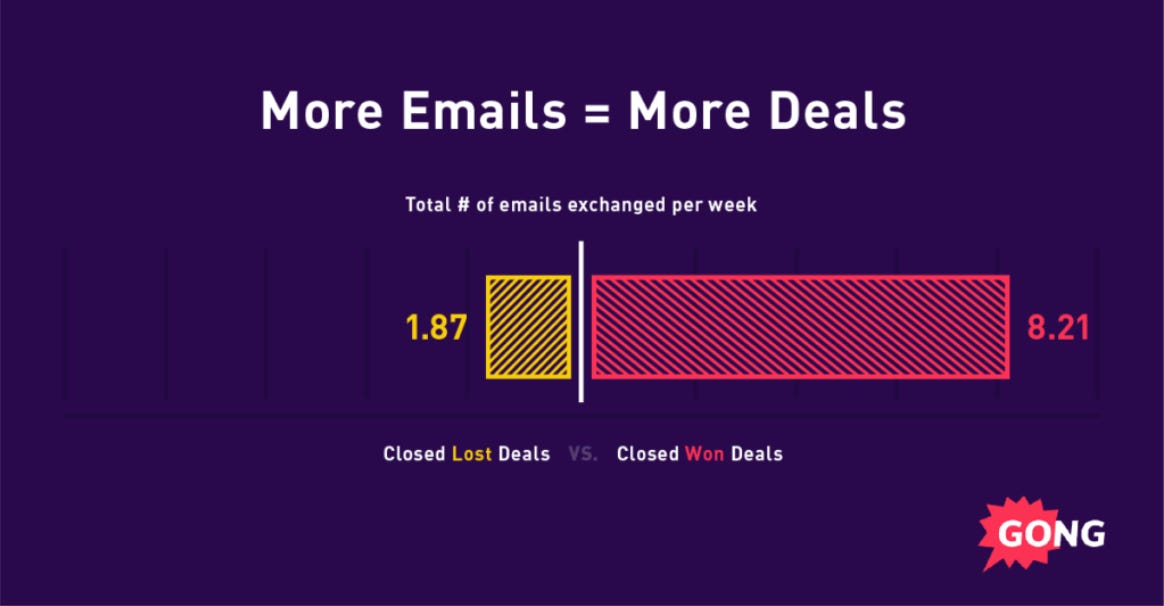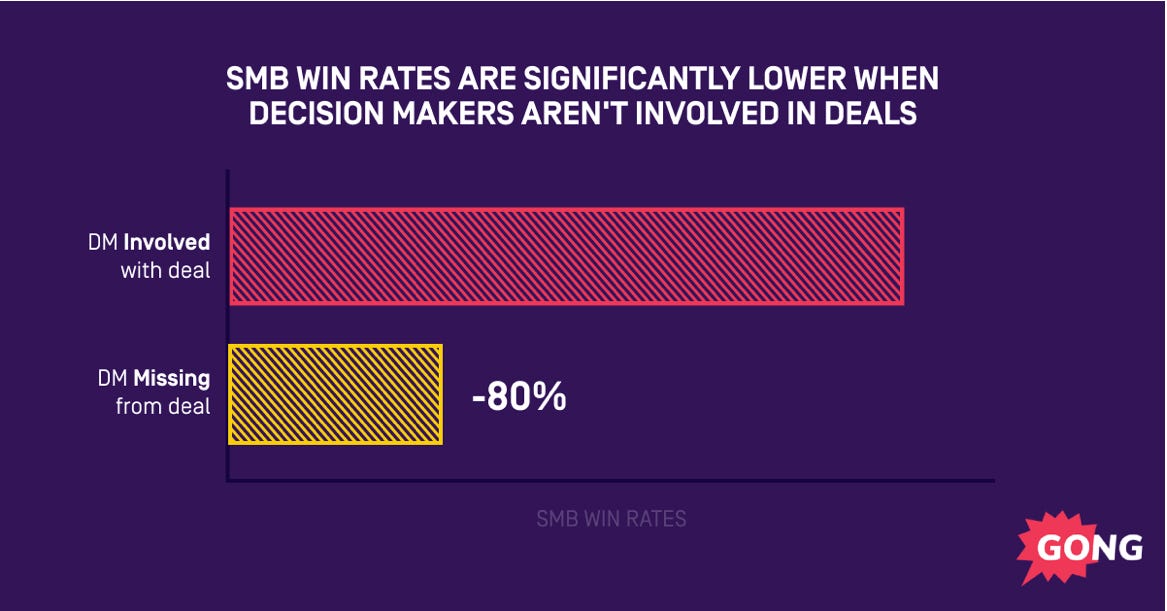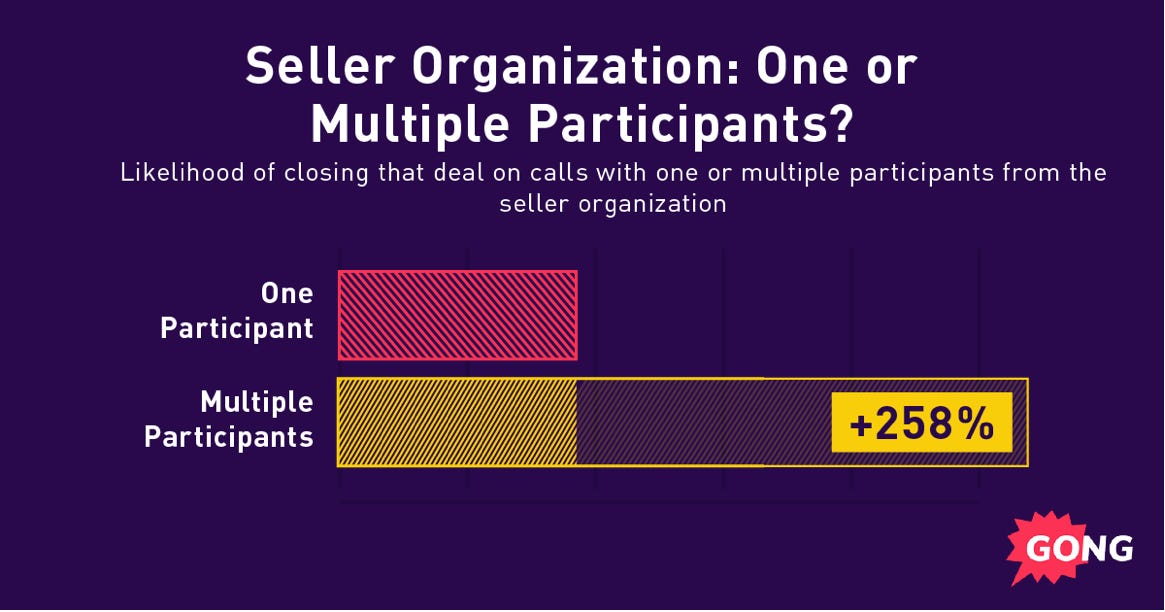One of the best software investment i ever made was Gong.
Back in 2017, i was an early adopter and haven’t been disappointed since. The Gong platform was created by Amit Bendov and Eilon Reshef. It is a software product that records customer conversations and processes them, capturing and analyzing customer interactions and alerts you to risks and opportunities across your business.
Another really cool byproduct of Gong is their blog and proprietary intelligence.
Gong Labs team pores through stats from millions of sales interactions to uncover actionable sales tips. Gong Labs' Revenue Intelligence Platform analyzes sales interactions across web-conferencing, phone calls and emails.
I highly recommend their blog, and i thought i would share one of their many master pieces as another one of my TLDR articles.
Enjoy 😊
30 SALES STATS FOR PROSPECTING
#1: DON’T use ROI in cold emails
Using ROI language in a cold email decreases success rates* by 15%. Even if buyers buy into your numbers, it’s too early!
#2: DON’T ask for time when booking meetings with cold emails
The Interest CTA is the highest performing call to action for cold emails. Salespeople tend to have more success when they can effectively pique curiosity through an interest CTA.
#3: DON’T ask “Did I catch you at a bad time?”
There are only 3 responses to “Did I catch you at a bad time? Silence, followed by phone hanging up sound. Success rate for cold calls that opened with this line? 0.9%.
#4: DO ask “How’ve you been?”
Using the “How have you been? line resulted in a 6.6x higher success rate than the baseline. Cold calls that led with this question resulted in greater than 10% success rate.
#5: Open with the reason for your call
Stating the reason for (cold) call increases your success rate by 2.1x. Tell it early in the call, and don’t be afraid to repeat it later on in the conversation.
#6: Avoid discovery
The talk-to-listen ratio for successful cold calls is HIGHER than unsuccessful ones (55% talk vs. 45% listen) Don— your goal is to lock in a meeting, NOT learn more about the buyer's needs. Save the discovery-type questions for post-meeting booked.
#7: Turn on your webcam!
2020 was the year of the video call, but a video conversation without your camera turned on is just a phone call. Deals are 127% more likely to close when the video is used during any point in the sales process. Win rates are 94% higher for deals where sales pros sell with video on.
#8: It’s OK to curse
Sales rep is 4x more likely to swear on a sales call if the buyer curses first. 8% increase in close rates when the salesperson and the buyer curse on the call, compared to nobody cursing at all.
#9: Listen first, talk later
The stats are in: Top sales reps listen more compared to average salespeople. The best sellers have a “talk to listen” ratio of 46%. Average salespeople are in the high 60s:
#10: Finish with next steps
Securing “next steps has a considerable impact on shortening the sales cycle. In the fastest deals, the seller spent 53% more time discussing next steps during the first meeting.
#11: Use these words that sell
Top sellers use the best* words to increase the chances of a deal moving forward in the sales cycle. The most important person in the world is always the person you’re speaking to (your buyers)
You. Your. Your team.
#12: Using slides on discovery calls decreases success rates
Data found a negative correlation between the use of slides in discovery meetings and the likelihood of earning a follow-up call. Slides are less about conversation, more about presentation. Success rates increase when sellers present slides in mid and late-stage meetings.
#13: Talk price early in the cycle
Win rates are highest when sellers discuss pricing on the first call — 10% higher. The longer a salesperson waits to discuss pricing, the less chance of closing the deal.
#14: But save price for last
Gong data also show while you definitely should discuss pricing on the discovery call, it’s best not to start the conversation with money. The best-of-the-best sale reps bring up price in the 38-46 minute window.
#15: Avoid one-size-fits-all social proof
Social proof can be the icing on the cake to help close a deal, but it can also backfire. Social proof is most often misapplied in sales, says Chris Orlob.
#16: Phrase questions to get long answers
When buyers give you more information, you’re not shooting in the dark. This approach will turn into longer, richer, more insightful/valuable answers.
#17: Shoot for 11-14 targeted questions
Ask less and you aren’t getting enough information. Ask more and buyers tune out. Ask questions that make you sound like a subject-matter expert.
#18: Don’t sell on ROI
Presenting ROI at any point in your sales process correlates with a 27% drop in close rates. Over-indexing on ROI to seal the deal is still a risk.
#19: Don’t feature dump
Your demo should EXACTLY solve your customer’s business problem. No less. But, also, no more. Almost everyone shows MORE than what will solve the problem.
#20: Stick to 9 minutes
The Gong platform recorded the audio and video of 121,828 web-based sales meetings and analyzed them with AI. The data were pretty compelling:Intro meetings that ultimately led to a closed-won deal spent 9.1 minutes sharing sales deck presentations.
#21: Hit pause
The best-of-the-best salespeople pause 5 TIMES longer than the average rep after objections. Successful reps pause when they get hit with a flurry of objections.
#22: Slow it down
Sales reps take their time (176 words per minute) when responding to objections. Sales reps maintain the average talking pace of 173 words a minute. When flustered by an objection, the middle-of-the-road sales rep speeds up to 188 words per hour.
#23: Respond to objections with questions
Sales reps respond to objections by asking questions at 54.3% of the time compared to 31% for average sales reps. Objections are seen as a threat for the average seller, but to the top reps, objections are opportunities.
#24: DON’T use the word “list price”
List price OR typical price OR standard price means sales cycle will take 19% longer than average. That extra 19% could be the difference between a deal closing this month/quarter/year and getting pushed to the next cycle.
#25: Negotiate over phone AND email
Discussing price over email has a significant, positive impact on win rates.
HOWEVER, negotiating price over email alone is not good form: 50% of written communication is misunderstood by the recipient.
INSTEAD, handle price via phone AND email: Win rates are significantly higher when pricing is covered over both channels instead of only one.
#26: Don’t get spooked when your buyer tells you they “need to think about it.”
“I need to think about it” is not what you want to hear during the sales cycle. Data shows that deals that include that phrase show a slight uptick in win rates.
#27: Use the specific CTA to move deals forward
You know they are interested, so you need a direct, to-the-point approach. Confirm a time and send that calendar invite ASAP. The goal: have that “invite accepted accepted in your inbox ASAP.
#28: Use email velocity to forecast deals
The #1 signal that your deal is going to close is high email velocity, the number of emails exchanged between buyers and sellers. Email velocity is NOT how many sales emails you send prospects.
#29: You NEED to get to the decision-maker
SMB deals that don’t involve DMs are 80% less likely to close. Getting the DM involved in the sales cycle has even more impact on those 6-figure+ enterprise deals.
#30: Sell as a team
The chance of closing a deal on calls with multiple participants from the seller’s organization is 258% higher than if you try to roll solo. Successful teams rally on deals.
Get the full article from Gong here. https://www.gong.io/blog/sales-stats/




